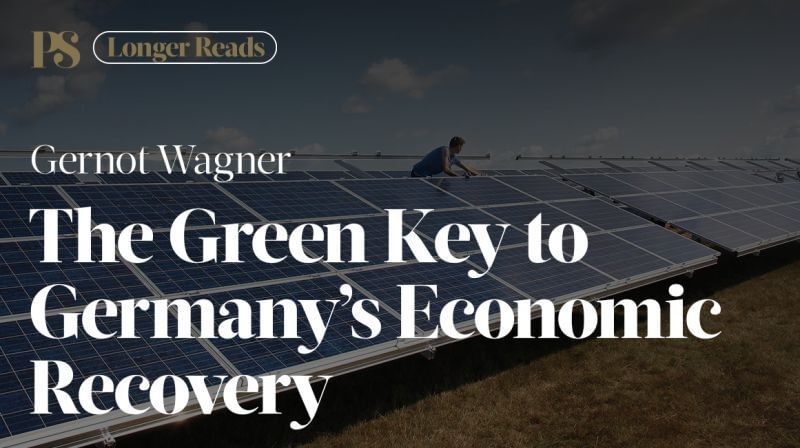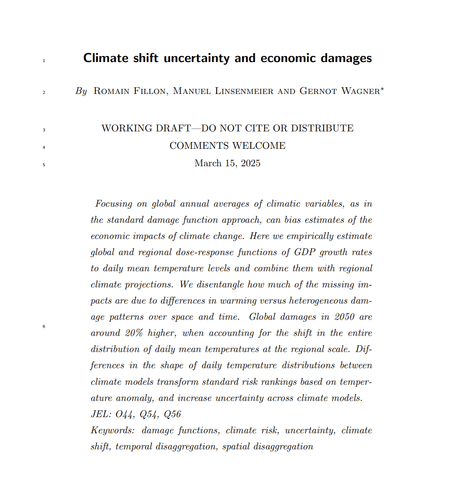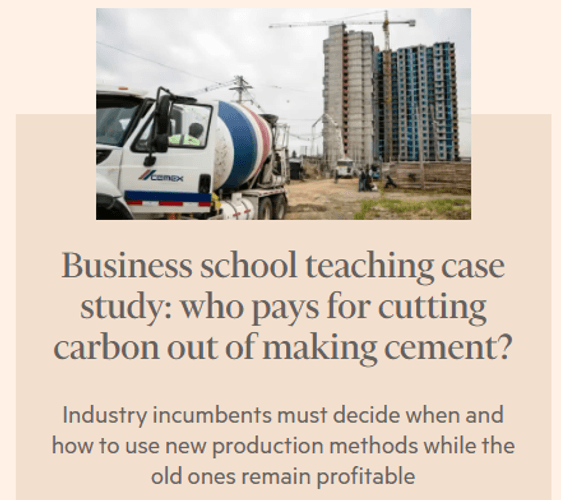If you can’t say it in English, don’t bother
Climate Shock Q&A
Published by Columbia's School of International and Public Affairs.
Tell us about ‘Climate Shock’.
Most books are about what we know. This book is about what we don’t.
When it comes to climate change, there is plenty we do know. We know that it’s a problem and that it demands sensible action now.
What we don’t know about climate change makes it a much bigger problem than what we commonly assume.
One way of looking at it is via the so-called ‘social cost of carbon.’ What does one ton of carbon dioxide pollution cost us? The U.S. government’s central—and I’d add, conservative—estimate is $40 per ton of carbon dioxide. Step one, then, is to put a price on carbon of at least as much.
But the emphasis needs to be on “at least as much.” What we don’t know pushes the number in one and only one direction. The true number is likely much higher, and by ignoring that probability we are taking a huge gamble, and betting the one planet we’ve got.
Awareness of this issue is increasing, and more people seem to be giving climate change more pressing attention. Do you think we’re at least moving in the right direction?
Yes, we are. Awareness clearly is increasing. There have been plenty of policies put in place that are in fact starting to move in the right direction. So, yes, I’m optimistic.
But, much, much more needs to be done. We are at the very beginning stages of where we need to go.
When you look at the $40 per ton of carbon dioxide, some places are indeed getting close. The problem, once again, of course, is that 40 might be seriously underestimating the true cost.
With that in mind, what do you want people to take away from this book?
Well, as a teacher, one implication is clear: Be curious about the world and work to learn more about the things we don’t yet know.
But we also need to realize that there are some things we may never know, at least not in any of our lifetimes. We may never have the full, ‘right’ answer. There’ll always be uncertainties left.
So in order to act sensibly on climate change, we have to deal with these uncertainties, these risks. That calls for the same kind of thinking that economists, businesses, and Wall Street use: in the end, it’s all about risk management.
You mentioned teaching; how long have you been at SIPA? How would you characterize your experience?
I’ve been at SIPA for five years, where I teach Economics of Energy, a broad survey class. It’s a class very much in line with the ideas of Climate Shock: substantively, energy and climate are two sides of the same coin.
And in terms of approach—both to this book, and in the class—if you can’t say it in English, don’t bother. There’s plenty of research that went into the 100-or-so pages of end notes in the book. But the main text is without equations, without jargon.
Same in the class: it’s an economics class, but all the assignments are strictly focused on writing 1,000-word essays. Do the research, understand the serious work economists do to analyze a particular question, but once you write it up, put it in plain English, with two feet in the real world. It’s a very good way of keeping you honest.
This interview, conducted by Tamara El Waylly MIA ’15, has been edited and condensed.


